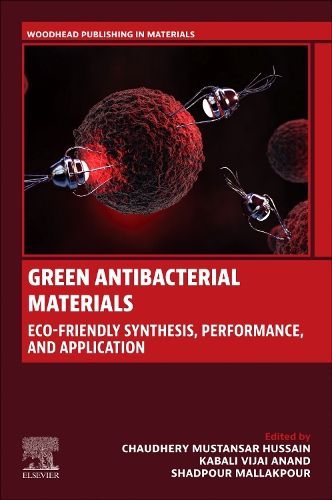Readings Newsletter
Become a Readings Member to make your shopping experience even easier.
Sign in or sign up for free!
You’re not far away from qualifying for FREE standard shipping within Australia
You’ve qualified for FREE standard shipping within Australia
The cart is loading…






Green Antibacterial Materials: Eco-friendly Synthesis, Performance and Applications presents the latest developments in this important research field. It provides comprehensive coverage of the various types of green antibacterial materials that are currently available. The book emphasizes sustainable synthesis techniques, practical applications, and future perspectives and delves into the fundamental concepts of antibacterial materials, exploring their mechanisms of action and the challenges associated with their conventional options. This book will be a valuable reference resource for researchers, materials scientists, and other professionals.
Sections discuss a wide range of green antibacterial materials, including natural sources such as plant extracts and marine organisms, biopolymers derived from renewable resources, metal-based compounds, carbon-based materials, and hybrid combinations. Each material type is thoroughly discussed, highlighting their unique properties, synthesis techniques, and mechanisms of antibacterial activity. Additionally, the book enables readers to explore and develop sustainable solutions for various applications.
$9.00 standard shipping within Australia
FREE standard shipping within Australia for orders over $100.00
Express & International shipping calculated at checkout
Green Antibacterial Materials: Eco-friendly Synthesis, Performance and Applications presents the latest developments in this important research field. It provides comprehensive coverage of the various types of green antibacterial materials that are currently available. The book emphasizes sustainable synthesis techniques, practical applications, and future perspectives and delves into the fundamental concepts of antibacterial materials, exploring their mechanisms of action and the challenges associated with their conventional options. This book will be a valuable reference resource for researchers, materials scientists, and other professionals.
Sections discuss a wide range of green antibacterial materials, including natural sources such as plant extracts and marine organisms, biopolymers derived from renewable resources, metal-based compounds, carbon-based materials, and hybrid combinations. Each material type is thoroughly discussed, highlighting their unique properties, synthesis techniques, and mechanisms of antibacterial activity. Additionally, the book enables readers to explore and develop sustainable solutions for various applications.